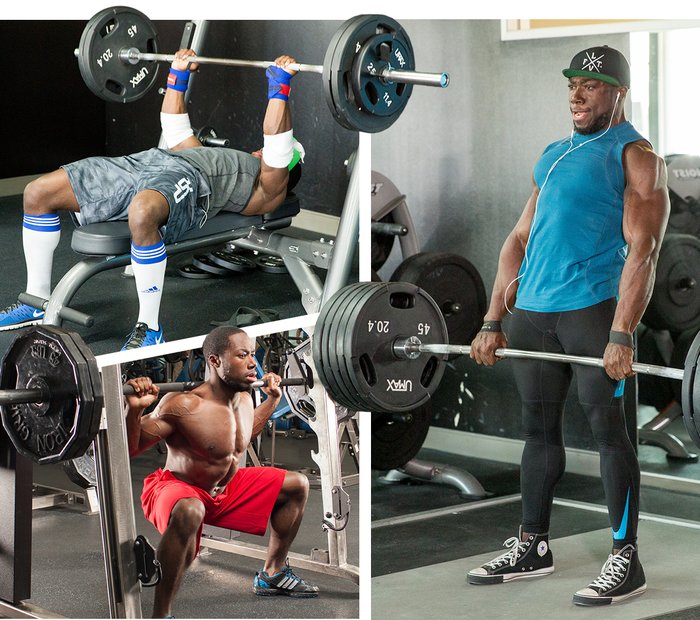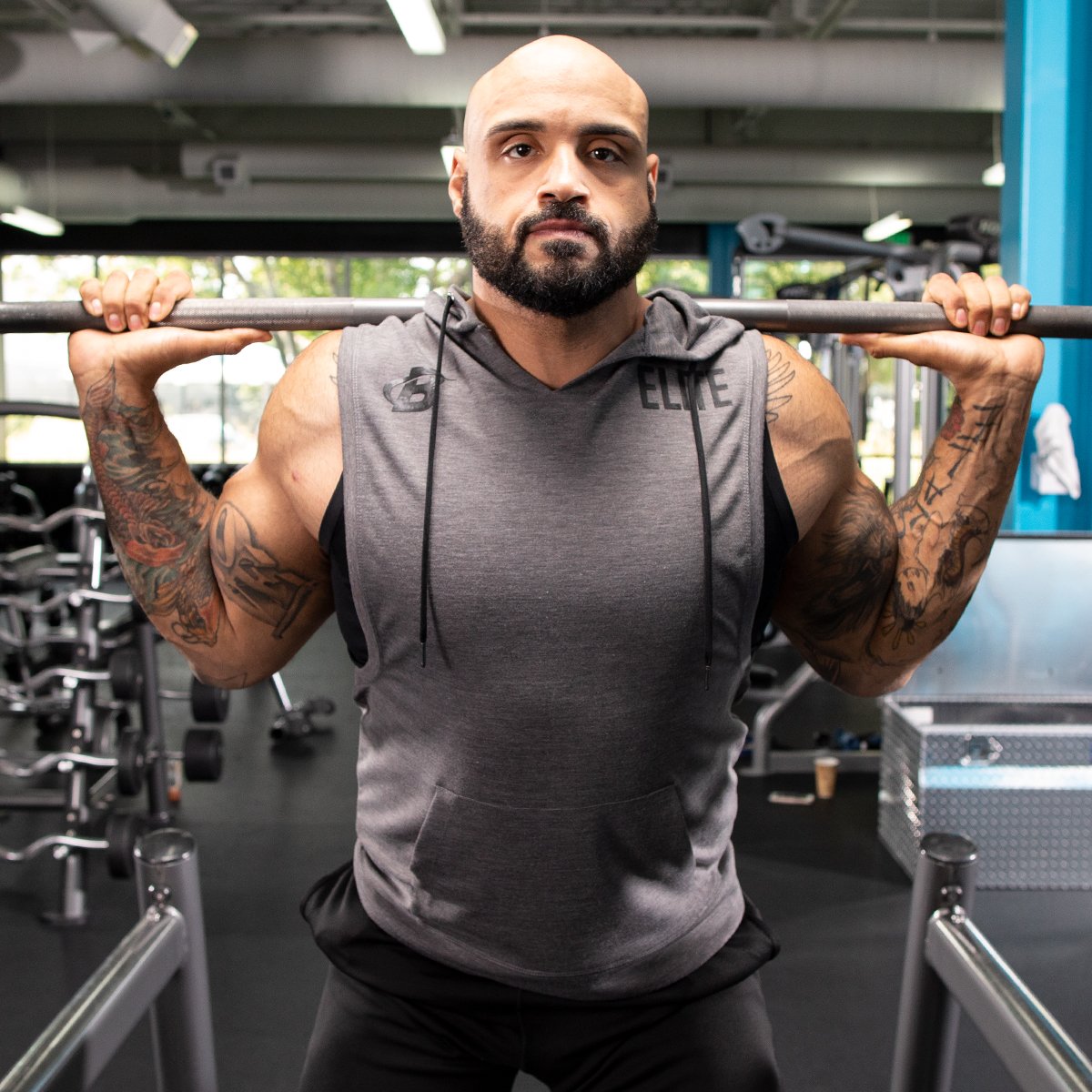I'm a rookie father. To say time (and sleep) have been a commodity of late is an understatement. My schedule has pretty much consisted of changing diapers, feedings, doctors' appointments, studying the book "Go the Fuck to Sleep" like the great literature it is, and hyperventilating into a paper bag…in no particular order.
Normally, this is where someone might say that they've pretty much stopped training. I'll admit that's not me. I don't say this to sound all braggadocious or hoity-toity, it's just that I have zero excuses not to train since I own my own gym, and I have a very understanding wife, who's just as prone to punching someone in the face if she doesn't exercise.
That being said, I can appreciate the idea of not being able to train more than I ever have in the past. I get it now. I really do.
This program is for the new fathers and mothers, or employees and students—really whoever—who still want to chase strength in their training, but can truly only swing it 2-3 times a week. If you have to keep things short, sweet, and simple, this program is for you!
Follow the full program, [Strong in 3 Days a Week](http://You can track your workouts in the BodyFit app, swap out lifts to match your equipment, and watch demonstration videos of every movement in every workout!), in BodyFit Elite. You can track your workouts in the BodyFit app, swap out lifts to match your equipment, and watch demonstration videos of every movement in every workout!
First, The Fine Print
- When time is the hurdle, the enemy of execution is complexity. The key to this program is to make things brutally monotonous and simple. Exciting? No. But you will make progress.
- You can still get great results training 2-3 times per week, but to do so you'll need to squat, deadlift, and bench press every workout. A body-part-split approach won't be ideal in this scenario since the objective will be to prioritize movements that provide a bit more bang-for-your-training buck.
- The beauty of this program is that it's a template. Most, if not all, of the variables can be tinkered with to fit your schedule, experience level, and equipment availability. Nothing is set in stone other than the main gist: to squat, bench press, and deadlift every workout.
- If you want to front squat, do it. If you'd rather jump into a live volcano than front squat, perform back squats. Feel free to use whatever variation of the "Big 3" that's best suited for your experience level, anatomy, or ego.
Possible Variations
Squat: Back squat, front squat, high bar, low bar. Bench Press: Flat bench, incline bench, decline bench, close grip. Deadlift: Conventional, sumo, trap bar, Jefferson, rack pulls, snatch grip.

{{caption}}
- Look at the program and you'll see I'm a big fan of incorporating some form of rowing into every training session. Seated cable rows, chest-supported rows, single-arm rows, TRX rows—they're all good, and you can alternate between them weekly. If you have any time at all, don't skip this.
- Once a week, I recommend doing some single-leg accessory work. Why? Because it works. As with rows, you can do something different each week: step-ups, split squats, single-legged hip thrusts, all types of lunges.
- Don't neglect your "Gun Show" work. This is also important, but feel free to substitute or augment any arm exercises with additional delt work like dumbbell raise variations, rotator-cuff work, or core work like Pallof presses or farmer's carries.
- When you're done with the four weeks, you can rinse and repeat, maybe changing out some of the moves for other variations of the same thing. Honestly, you could stay on this plan for a long time.
- Listening to 90s hip-hop is always encouraged.
The Template
Each day, one lift will be performed heavy, one for repetitions, and one for speed.
So, for example, if you're training three days a week, it might look like this:
- Day 1: Squat heavy, deadlift for speed, bench for repetitions.
- Day 2: Bench heavy, squat for speed, deadlift for repetitions.
- Day 3: Deadlift heavy, bench for speed, squat for repetitions.
If you are only training two times per week, I recommend taking the above schedule and turning it into an A, B, C split.

{{caption}}
- A. Squat heavy, bench for speed, deadlift for repetitions.
- B. Bench heavy, deadlift for speed, squat for repetitions.
- C. Deadlift heavy, squat for speed, bench press for repetitions.
Then schedule it like this:
- Week 1: A and B
- Week 2: B and C
- Week 3: C and A
Simple enough, right? Now let's determine what heavy means. Because if you think you're going to testing your "true" max every session, you've got your head in the Bulgarian clouds.
Heavy Sets
I like to incorporate what I call EDM (estimated daily max) sets, which is something I borrowed from the great strength coach Paul Carter. The idea here is to stay cognizant of day-to-day ebbs and flows in energy levels and to take advantage of auto-regulation.
Some days you feel like you're Wolverine and want to attack all the weights, while on other days, you feel like Wolverine beat you in a street fight and the weights don't feel so light. Utilizing EDM sets allows you to match how you feel any particular day to how hard you should go in the gym.
I prefer to use EDM sets for 3 reps or 5 reps. But to be clear, these are not actual 3-5-rep maxes. They're daily maxes, meaning, what your max is for that given day.

{{caption}}
Here's how each plays out:
3-Rep EDM
- Work up to your estimated daily max of three manageable but heavy reps, using however many "build-up" sets it takes you to get there.
- Once you hit that number, stay at the same weight and perform some additional sets of 3-5 singles, which you should easily be able to handle. I like this because it allows you to get in some more volume with a submaximal weight.
Let's say your 3-rep EDM deadlift is 300 pounds. Once you hit that number, you'll then perform 3-5 singles at 300 pounds.
5-Rep EDM
- Work up to your estimated daily max of 5 reps, using however many "build-up" sets it takes you to get there.
- Once you hit that number, stay at the same weight and perform 1-3 additional sets of triples, which you should easily be able to handle.
Let's say your 5-rep EDM deadlift is 250 pounds. Once you hit that number you'll then perform 1-3 sets of 3 at 250 pounds.
What's nice about alternating between 3-rep and 5-rep EDM sets is that it allows yet another variable to keep training fresh.
Speed Sets And Repetition Sets
These are both more self-explanatory. Getting fast will also help you get strong. Here, the idea is to perform 8-12 sets of 1-3 reps with minimal rest (30-45 seconds) and submaximal weight, in the range of 60-70 percent of your one-rep max. Feel free to play with the percentages a bit, as less experienced lifters may be able to get away with a higher percentage, perhaps upward of 80 percent. But remember that the point is to hone technique. If your eyes bleed during these, you're doing it wrong.

{{caption}}
As for repetition sets, you can think of these as your "hypertrophy" sets. The idea here is to accumulate volume in the 8-12 rep range to help maintain or even build more muscle. With these, I'll sometimes switch out variations, such as using Romanian deadlifts instead of conventional or sumo. Or, I might superset it with an accessory movement. Again, feel free to tweak the percentages on these, within reason. They should be heavy, but the outcome should never be in doubt.


